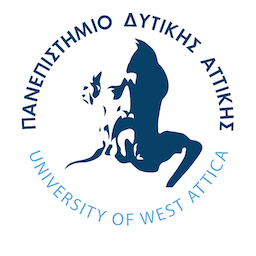Καθηγητές Μαθήματος
Μαθησιακά Αποτελέσματα
Μετά το τέλος του μαθήματος οι φοιτητές θα είναι σε θέση να:
- Γνωρίζουν τις αρχές της Ποιότητας
- Να μπορούν να αναπτύξουν μελέτες HACCP
- Να εφαρμόζουν τα Συστήματα Διαχείρισης της Ασφάλειας των τροφίμων με βάση διάφορα πρότυπα
- Να αναπτύσσουν και να εφαρμόζουν τα Συστήματα Διαχείρισης Ποιότητας κατά διάφορα πρότυπα
Γενικές Ικανότητες
- Αναζήτηση, ανάλυση και σύνθεση δεδομένων και πληροφοριών, με τη χρήση των απαραίτητων τεχνολογιών
- Αυτόνομη εργασία
- Ομαδική Εργασία
- Ελεύθερη και δημιουργική σκέψη
ΠΕΡΙΕΧΟΜΕΝΟ ΜΑΘΗΜΑΤΟΣ
- Ποιότητα (τροφίμων) – ορισμοί & βασικές αρχές
- Βασικές αρχές διαχείρισης της ποιότητας.
- Διασφάλιση Ποιότητας – Συστήματα
- Ποιοτικός Έλεγχος- Αξιολόγηση ποιότητας (τυποποίηση, πιστοποίηση, διαπίστευση)
- Ασφάλεια τροφίμων: Συστήματα Διαχείρισης Ασφάλειας Τροφίμων (απαιτήσεις – δεσμικό πλαίσιο)
- HACCP: ορισμός, αναγκαιότητα, προαπαιτούμενα προγράμματα, ορολογία, οι 7 αρχές, δομή συστήματος, ανάπτυξη μελέτης
- Ανάλυση και Αξιολόγηση Κινδύνου( Hazard Analysis- Ηazard Assessement)
- Παράδειγμα (Workshop) ανάλυσης, αξιολόγησης και κατηγοριοποίησης μέτρων ελέγχου
- Πρότυπα της σειράς ISO (ιστορία, ανάπτυξη, δομή)
- Αναλυτική περιγραφή δομής και απαιτήσεων ISO 22000:2018
- Επιθεωρήσεις ΣΔΑT
- Ιχνηλασιμότητα
ΣΥΝΙΣΤΩΜΕΝΗ ΒΙΒΛΙΟΓΡΑΦΙΑ
Ξενόγλωσση
- Abuhav, I. (2016). ISO 9001:2015 A Complete Guide to Quality Management Systems, Taylors and Francis, Portland, USA.
- ISO 19011:2011. Guidelines for auditing management systems, International Organization for Standardization.
- Mortimore, S. and Wallace, C. (2001). HACCP, Oxford Blackwell Science, London, U.K.
- Pierson, Μ. D. And Corlett, Jr. D.A. (1992). HACCP Principles and Applicαtions, published by Van Norstand Reinhold, New Υork.
- Microorganisms in Foods 7 (2002). International Commission on Microbiological Specifications for Foods (ICMSF), Kluwer.
- Sansawat, S. and Muliyil, V. (2011). Comparing Global Food Safety Initiative (GFSI) Recognised Standards.
- Total Quality Management (1994): The European Model for Self-Appraisal, European Foundation for Quality Management, Brussels.
- Earley, R. (1995). Guide to Quality management Systems for the Food industry, Blackie Academic & Professional, London.
- Gould, W. Α. (1992). Total Quality management for the Food /industries. CTI Publications INC., Baltimore, USA.
- British Retail Consortium (2015). Global Standard Food Safety. Issue 7. London, www.brcglobalstandards.com.
- Wenk, M. (2005). The European Union’s Eco-Management and Audit Scheme (EMAS), The Netherlands: Springer.
- Hubbart, M.R.(1996). Statistical Quality Control for the Food /industry, 2nd Edition, Chapman & Hall, London.
- Atkinson, P.E. (1990). Creating Culture Change: the key to successful total quality management, IFS, Bedford, UK.
- Blackburn, C. and McClure, P. (2002). Food borne Pathogens, Hazards, Risk Analysis and Control, C.H.I.P.S.
- Brown, M. and Stringer, M. (2002). Microbiological Risk Assessment in Food Processing, C.H.I.P.S.
- Gould, W.A. (1994). Current Good Manufacturing Practices (CGMP’s) / Food Plant Sanitation, CTI Publications Inc.
Ελληνική
- Τσάκνης, Ι. (2021). Ποιότητα και Ασφάλεια Τροφίμων και Ποτών, 2η Έκδοση, Εκδόσεις Τζιόλα, ISBN: 978-960-418-905-2, Θεσσαλονίκη.
Συναφή επιστημονικά περιοδικά:
- Food Quality and Preference
- Food Quality and Safety
- Food Control,
- Food policy
- EFSA journal
- Safety Science
- Journal of Food Safety

